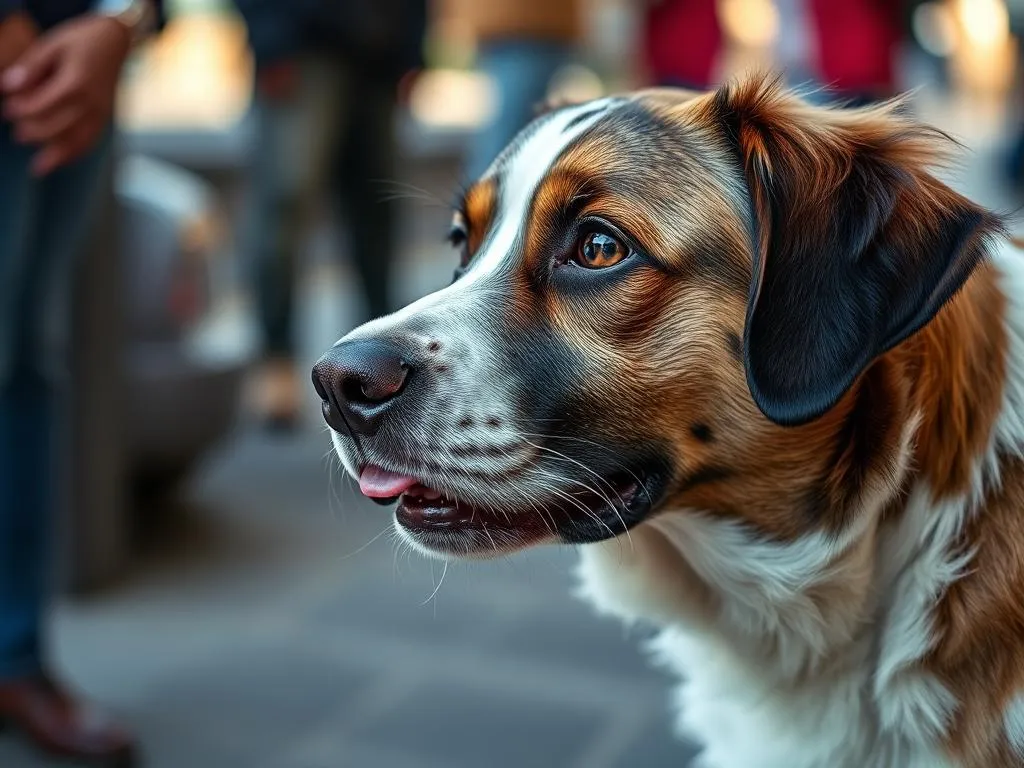
Dogs are often referred to as “man’s best friend,” and for many dog owners, the affectionate licking of their furry companions is a common behavior that sparks both curiosity and joy. In fact, studies indicate that licking is one of the primary forms of communication in dogs, serving multiple purposes that can range from affection to anxiety relief. Understanding why dogs lick people is not just about deciphering a quirky habit but is crucial for fostering a healthy, happy relationship with your canine companion.
Understanding Dog Behavior
The Nature of Dogs
To comprehend why dogs engage in licking behaviors, it’s essential to consider their origins. Dogs are descendants of wolves, which have been domesticated for thousands of years. This long history of domestication has shaped not only their physical traits but also their social behaviors. Canines are inherently social animals that thrive on interaction and connection with both humans and other dogs. Their instincts drive them to communicate and bond with their families, which often manifests through behaviors like licking.
Importance of Communication in Dogs
Dogs communicate through a rich tapestry of body language, vocalizations, and behaviors. Licking is one of the many ways that dogs convey messages to humans and other animals. Alongside wagging tails and playful barks, licking serves as a crucial component of canine communication. Understanding these signals can greatly improve your relationship with your dog, allowing for better interactions and a deeper bond.
Why Dogs Lick People
Natural Instincts
Licking is a natural behavior in dogs, rooted in their instincts. In the wild, wolf pups are often licked by their mothers as a way to stimulate their digestive systems and encourage them to eat. This instinctual behavior carries over into domestic dogs, who may lick their owners for similar reasons—instinctively seeking affection and care. Observing wild canines, you’ll notice that licking plays a role in social interactions as well, reinforcing social bonds within packs.
Affection and Bonding
One of the most common reasons why dogs lick people is to express affection. When your dog licks you, it is often a sign of love and attachment. This behavior helps to strengthen the bond between you and your furry friend. Just as humans hug or kiss to show affection, dogs use licking as a way to communicate their feelings. Engaging in this behavior releases endorphins, both for the dog and the recipient, creating a shared emotional experience.
Grooming Behavior
Dogs are also known for their grooming habits, which include licking. In the animal kingdom, grooming is a crucial part of social structure and bonding. When dogs lick their owners, it may serve as a way to show care and affection. They are instinctively performing a grooming behavior that promotes closeness and comfort. This behavior can also extend to licking their own bodies, where they help keep themselves clean and healthy.
Seeking Attention
Another reason why dogs lick people is to seek attention. Dogs are astute creatures that quickly learn how to elicit responses from their owners. If a dog licks you and you react—whether positively or negatively—they may interpret that as a cue to continue the behavior. This can lead to a cycle where the dog licks more frequently to receive the attention they crave. Understanding this behavior can help you respond appropriately, ensuring that your dog’s licking does not become a means of manipulation.
Taste and Exploration
Dogs experience the world around them primarily through their sense of smell and taste. Licking can be a way for dogs to explore their environment and discover new, interesting flavors. Your skin may carry traces of food, sweat, or other scents that pique their curiosity. This exploratory licking is a natural and harmless behavior, often driven by their innate desire to learn about their surroundings.
Anxiety and Stress
In some cases, licking can be a coping mechanism for anxiety or stress. Dogs may lick themselves, objects, or even their owners as a way to self-soothe. If you notice your dog licking excessively, it may be a sign of underlying emotional distress. Understanding the context of this behavior is crucial; it’s important to differentiate between normal licking and excessive licking that may indicate anxiety or other health issues.
When Licking Becomes a Problem
Excessive Licking
While licking is a natural behavior, excessive licking can become a concern. Excessive licking is characterized by a dog licking themselves, people, or objects to the point where it causes irritation or injury. This behavior can lead to skin infections, hot spots, or other health complications. If you notice that your dog is licking excessively, it’s important to address the issue promptly.
Understanding Triggers
Identifying the triggers for excessive licking can help in managing the behavior. Common triggers include boredom, anxiety, or changes in the dog’s environment, such as new family members, moves, or changes in routine. Observing your dog’s behavior closely can help you determine whether the licking is stress-related or a form of learned behavior.
Solutions to Manage Licking
If you find yourself dealing with a dog that licks excessively, there are several strategies you can implement. Training techniques, such as positive reinforcement, can help redirect your dog’s focus away from licking. Providing engaging activities, such as puzzles or interactive toys, can also keep your dog mentally stimulated and less likely to resort to licking as a means of entertainment.
The Health Perspective
Licking and Dog Health
Licking can also have health benefits for dogs in certain contexts. For example, dogs may lick wounds to help clean the area and promote healing. Their saliva contains natural antiseptic properties that can aid in this process. However, it’s essential to monitor licking behavior, as excessive licking can introduce bacteria and lead to infections or other health concerns.
Veterinary Insights
If you are concerned about your dog’s licking behavior, it’s advisable to consult a veterinarian. They can help determine whether the licking is a sign of underlying medical issues, such as allergies, skin infections, or anxiety disorders. Early intervention can prevent further complications and ensure the overall well-being of your furry friend.
How to Respond to Licking
Positive Reinforcement
To encourage appropriate licking behavior, positive reinforcement is key. Rewarding your dog for displaying desired behaviors can help them understand what is acceptable. For instance, if your dog licks you gently, offering praise or a treat can reinforce that behavior. This method fosters a positive environment and encourages your dog to engage in desired interactions.
Setting Boundaries
Establishing boundaries with your dog is essential for managing licking behavior. Clear commands, such as “no lick” or “leave it,” can help redirect your dog when they start excessive licking. Consistency is crucial; every family member should follow the same rules to prevent confusion and promote effective training.
Engaging Activities
To reduce licking behavior, providing engaging activities can be incredibly beneficial. Dogs require both mental and physical stimulation to thrive. Activities such as fetch, agility training, or scent games can keep them occupied and reduce the likelihood of licking as a form of entertainment. Incorporating regular exercise into their routine can also help alleviate anxiety-related licking.
Conclusion
Understanding why dogs lick people is fundamental to developing a deeper bond with your canine companion. From natural instincts and affection to grooming behaviors and anxiety, licking serves various purposes in the canine world. By recognizing the reasons behind this behavior, you can address any concerns and foster a harmonious relationship with your dog.
By observing your dog and responding appropriately, you can ensure that licking remains a positive aspect of your connection. So, the next time your furry friend greets you with a warm lick, remember that it’s their way of saying, “I love you!”









